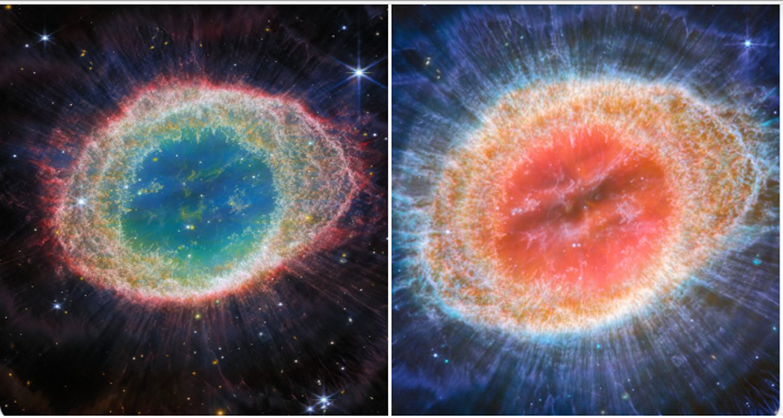An image showing what the sun looks like when it dies

When the star from which the Earth derives its energy dies, it will not remain as it is now, as many changes will occur to it, according to a recent scientific discovery.
According to scientists, a new image taken by the James Webb Telescope of what is known as a “ring nebula,” which is a huge mass of dust and gas resulting from the explosion of a star at the end of its life, gives us a glimpse into the fate of the Sun, the star around which the Earth and the planets of the solar system revolve.

But according to scientific estimates, we are 5 billion years away from the death of the sun.
The captured ring nebula is called Messier 57, and is located 2,600 light-years from Earth.
Born from a dying star that flung its outer layers away, it is this ejection that gives the Ring Nebula its vibrantly colored appearance, which some have likened to a donut.

Pictures of the ring nebula were taken earlier this August, but the new image gives previously unknown details in relation to the outer regions of the nebula, such as the arcs located after the main ring that formed at a stage in which the star was giant, before it got rid of most of its components to become its heart. A dwarf star as it currently exists.
Initial analysis indicates that a low-mass star in a strange orbit triggered the release of material from the dying star during its pass 280 years ago, which gave rise to the arcs.
By analyzing different images of the ring nebula, the researchers hope to better understand the complex processes behind the formation and evolution of stars, such as the Sun, before they reach the nebula stage.

Scientists believe that the sun will die after 5 billion years from now, after it grows into a giant red star, with an increase of 100 times its current size.
The sun will push the dust and gas outward, to form a shell around it that accounts for about half of its mass.
The star's core will turn into a dwarf that will shine for thousands of years, lighting up the atmosphere and forming a ring around it, like the Ring Nebula.
This would destroy any form of life on our planet, but it is uncertain whether our planet's rocky core will survive at all.
Source: websites

